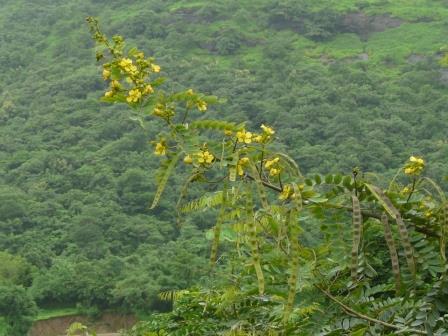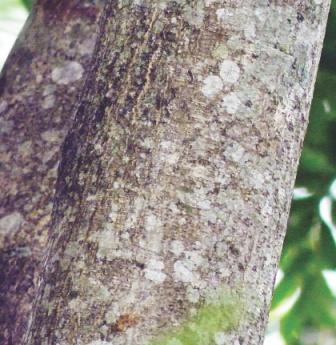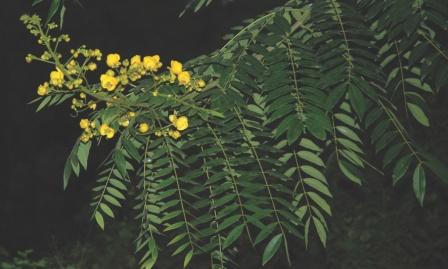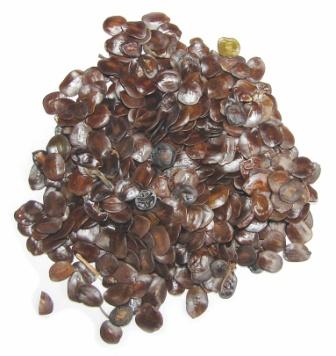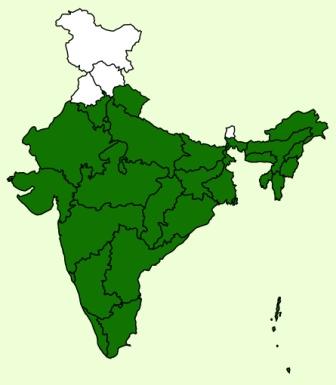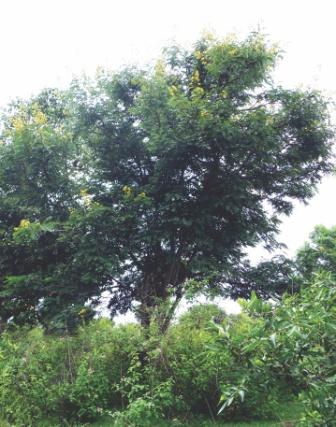Senna / Iron wood
Cassia siamea / Senna siamea
Description
General Information :
- Senna is a medium-size, evergreen ornamental tree.
- It has a dense, round, spreading crown with smooth greyish bark.
- Leaves are alternate and dark green in color.
- Flowers numerous bright yellow in color.
- Pods are flat brown when ripe.
- Seeds are bean shaped shiny dark brown in color.
Distribution :
- It is native to southern peninsula, particularly southern portion of Tamil Nadu.
Habitat : Various types of forests at low elevations.
Soil : Wide range of soils
Soil pH : 5.5-7.5
Altitude :Up to 1200 m (MSL)
Rainfall :400-2800 mm
Temperature : 38°c- 48°c
Terrain : Plain / hilly
Tree Characteristics :
- Strong light demander, Drought resistant and not resistant to fire
- Sensitive to poor drainage.
Habit : Evergreen tree
Planting Guidelines
Natural Regeneration :
- Regenerates naturally by seeds and Coppice.
Artificial Regeneration :
- Propagated by Nursery raised seedlings.
Seed collection and Storage :
- Pods are collected during March – April.
- The seeds are collected by breaking the pods.
- Seeds can be stored up to 3 years.
- Seed Rate is 37000/kg.
- Germination capacity is 75 - 80%.
Seed Treatment :
- Hot water treatment for 10 minutes or cold Water treatment for 24 hours
Nursery Technique :
- Seeds are sown in standard size mother bed during April-May
- Germination starts in 3-4- days and lasts for three weeks.
- Pricking out in polythene bags can be done when first pair of leaves is noticed in the nursery seedlings.
- Sowing pretreated seed can also be done directly in polythene bags filled with equal proportion of sandy loam and FYM.
- Seedlings are placed under shade should be watered twice in a week.
Plantation technique :
- Six Month old nursery raised seedlings are fit for planting.
- Pit size of 30 cm3 with spacing of 3 m x 3 m or 5m x 5 m can be adopted.
- For afforestation on saline and alkaline soils pitting of 60cm x 60cm x 80cm or 60cm x 60cm x 120cm are adopted.
- For fuel wood plantation suitable spacing adopted is 2 m x 2 m.
Care & Disease Control :
- The plantation must be kept weed free and protection from cattle at the initial stage.
Irrigation :
- No Tolerance to water logging.
Recommended Harvest :
Yield :
- 150 to 200 tones/ha of Fuel wood
Agro Forestory :
- The tree is grown to provide shade along roads and in cocoa, coffee and tea plantations.
- It is also planted as a dense windbreak and shelterbelt.
- It is pruned into hedgerows and used as a live fence around food crops. When used as a hedgerow, it effectively increases topsoil infiltration, reducing runoff and combating soil erosion.
Major uses :
- The tree is grown to provide shade along roads and in cocoa, coffee and tea plantations.
- It is also planted as a dense windbreak and shelterbelt.
- It is pruned into hedgerows and used as a live fence around food crops. When used as a hedgerow, it effectively increases topsoil infiltration, reducing runoff and combating soil erosion.
- The leaves are used as green manure, and a well-grown tree can yield 500 kg/year of fresh leaves.
- S. Siamea forms ecto-mycorrhizae and provides very useful mulch, especially in alley-cropping systems.
- It is used extensively for rehabilitation of degraded land
- It sis cultivated as ornamental tree in parks and along road side as avenue.
Other uses :
- The wood is medium-weight to heavy, hard to very hard, resistant to termites, strong and durable.
- It is difficult to work, with a tendency to pick up in planing and it takes a high polish.
- The dark heartwood, which is often nicely figured, is used for joinery, cabinet making, inlaying, handles, sticks and other decorative uses


